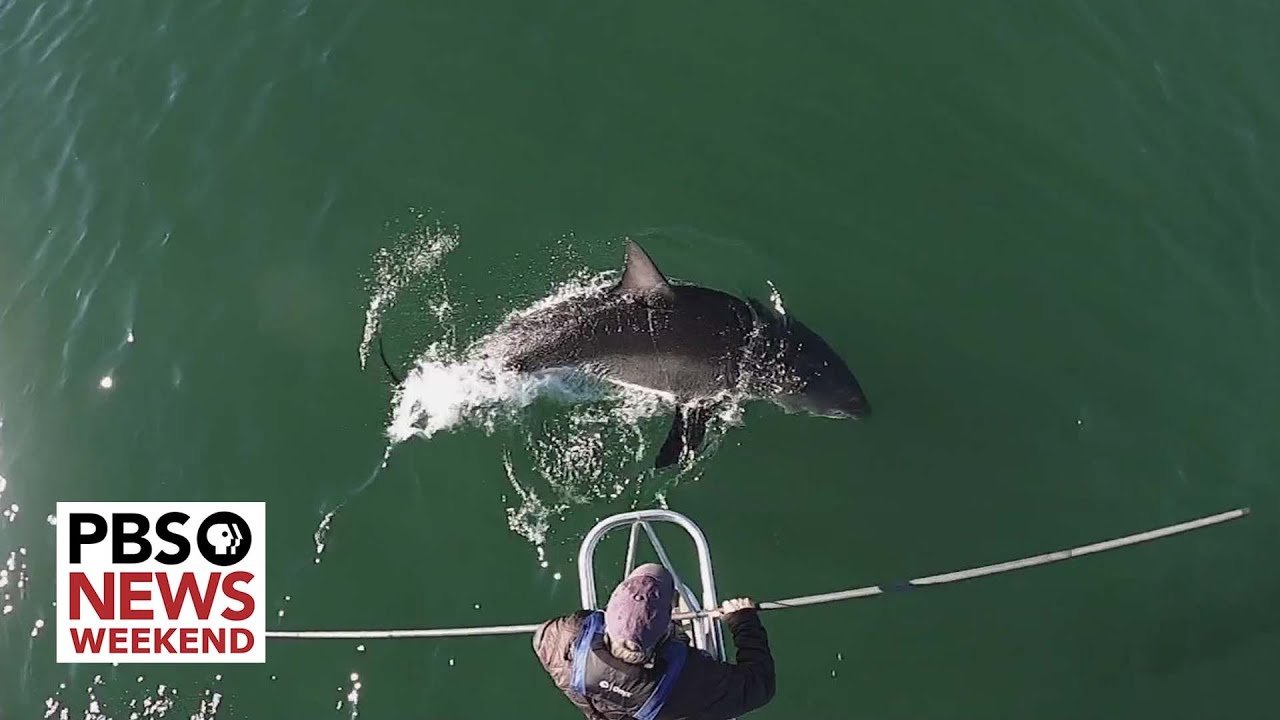Understanding Great White Sharks in Cape Cod
Habitat and Migration Patterns
Great white sharks are known to visit Cape Cod, Massachusetts, during the summer season, drawn to the area by abundant prey and favorable water conditions. They prefer the region’s inshore waters because of their warmer temperatures and accessibility to their primary food source, seals. The sharks usually migrate from the North Atlantic to Cape Cod, where they reside from late spring to early fall before heading south for the winter 1.
The Role of Seals in Shark Presence
Seals play a crucial role in the presence of great white sharks in Cape Cod. Over the past few decades, the seal population has dramatically increased due to the Marine Mammal Protection Act of 19722, providing an abundant food source for the sharks. As seals congregate on and around the Cape, the sharks naturally follow to take advantage of this plentiful food source3.
Shark Population Studies and Statistics
Through research and monitoring efforts, scientists like Greg Skomal and Megan Winton have been able to estimate the number of great white sharks in Cape Cod. According to a study published in 2023, there were about 800 great white sharks swimming off the Cape Cod coast from 2015 to 20184. Moreover, Cape Cod might have the highest density of great white sharks in the world, according to Winton’s pre-publication data5.
Research and Protection Efforts
The Atlantic White Shark Conservancy (AWSC) and Massachusetts Division of Marine Fisheries are working together to monitor and protect the great white sharks in Cape Cod. Dedicated researchers like Greg Skomal and Megan Winton are employing various techniques, including aerial surveys, tagging, and tracking, to better understand the sharks’ ecology, behavior, and migration patterns6. These collaborative efforts help inform conservation strategies and ensure the long-term survival of great white sharks in the region.
Safety and Prevention for Swimmers
As the presence of great white sharks has grown in Cape Cod, so have efforts to ensure public safety. Beach communities and organizations like the AWSC have implemented measures to monitor shark activity, including the use of the app Sharktivity, which allows beachgoers to report sightings and receive alerts when sharks are nearby7. In addition, Cape Cod National Seashore has adapted by providing general guidelines and advice to swimmers for minimizing the risk of interactions with sharks8.
Human Interactions and Conservation Success Stories

Shark Sightings and the Community Response
In recent years, the number of great white shark sightings off the coast of Cape Cod has significantly increased due to the rebounding gray seal population. Beachgoers and surfers have had to adapt to this new reality, and the community has implemented various public safety measures. Among these safety measures are spotter planes, lifeguards on duty, and the development of the Sharktivity app, which offers real-time shark tracking and alerting systems for both residents and visitors.
Advancements in Shark Tracking Technology
Scientists and conservationists have made great strides in developing new ways to study and monitor the growing great white shark population. Modern methods include tagging, underwater cameras, drones, and even statistical modeling to estimate the number of individuals in the shark population. A new study led by Dr. Taylor Chapple from Oregon State University uses dorsal fin profiles to create a catalog of individual sharks, allowing researchers to better understand their behavior and movements.
Educational Outreach and Public Awareness
Public awareness campaigns have played a key role in educating the public about the importance of sharks in the ecosystem. Locally, the Shark Center in Provincetown serves as an educational resource, offering exhibits, research information, and events to help residents and visitors learn about these fascinating apex predators. In addition, national campaigns emphasize the role sharks play in maintaining healthy ocean ecosystems and the need for their conservation.
Regulation Impact on Conservation
Conservation success stories like the increase in Cape Cod’s great white shark population can often be traced back to key regulations. The Marine Mammal Protection Act of 1972, for example, led to the recovery of the local gray seal population, which in turn attracted great white sharks back to the area. The U.S. government has also designated some shark species as prohibited, preventing overfishing and helping to maintain a healthy ecosystem.
Ecotourism and the Local Economy
As the great white shark population continues to grow, so does interest in ecotourism centered around these creatures. Local businesses, like Chatham Bars Inn, have developed tours and experiences that allow visitors to safely observe sharks in their natural habitat. Additionally, the increase in shark sightings has attracted scientific research and donor funding to the region, further enriching the local economy and contributing to conservation efforts. Overall, the presence of great white sharks in the waters of Cape Cod presents both challenges and opportunities for the community, and serves as an outstanding example of a conservation success story.

